Areca palm is a popular houseplant known for its lush green fronds that can add a tropical touch to any home. However, if you notice your Areca palm leaves turning yellow, it could be a sign of an underlying problem. Understanding the reasons behind the yellowing leaves is crucial to revive your plant and prevent further damage.
Yellowing of the leaves is not a natural occurrence in healthy areca palms. It could be a symptom of various factors, including soil and drainage conditions, water quality, nutrient deficiencies, and pests infestations.
Identifying the root cause of the problem is the first step to revive your yellowing areca palm. In this article, we will discuss the common causes of yellowing leaves in areca palms and how to fix them.
Key Takeaways
- Yellowing leaves are a sign of an underlying problem in areca palms.
- Common causes of yellowing leaves include poor soil and drainage conditions, water quality, and nutrient deficiencies.
- Identifying the root cause of the problem is crucial to revive your yellowing areca palm and prevent further damage.
Don’t miss these other related posts:
Understanding Areca Palm
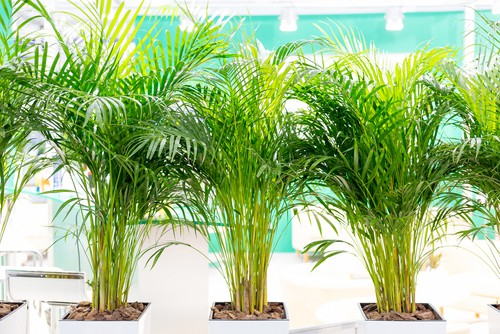
Areca palm, also known as Dypsis lutescens or golden cane palm, is a popular tropical plant that is commonly grown both indoors and outdoors. It is native to Madagascar and is known for its attractive feathery fronds that can grow up to 8 feet in length.
Areca palm is a relatively low-maintenance plant that can thrive in a variety of conditions. It is often used as a decorative plant in homes, offices, and public spaces due to its aesthetic appeal and air-purifying properties.
Indoor areca palms require bright, indirect light and well-draining soil. They prefer humid environments and should be watered regularly, but not over-watered. Outdoor areca palms can tolerate direct sunlight and can be planted in a variety of soil types, but they require regular watering and fertilization.
Areca palm leaves are typically green and healthy, but they can turn yellow for a variety of reasons. It is important to understand the causes of yellowing leaves in order to properly care for the plant and prevent further damage.
Some common reasons for areca palm leaves turning yellow include over-watering, under-watering, exposure to direct sunlight, pest infestations, and nutrient deficiencies. Lethal yellowing is a disease that affects all types of palm trees, including areca palms, but it is rare and typically only affects outdoor plants.
By understanding the needs and preferences of areca palms, as well as the common causes of yellowing leaves, plant owners can ensure that their plants remain healthy and vibrant.
Signs of Yellowing Leaves
Areca palms are known for their lush green foliage, and yellowing leaves can be a sign that something is wrong with the plant. Here are some signs to look out for:
- Yellow Leaves: Yellowing leaves are the most obvious sign that something is wrong with the plant. They can appear as yellow spots or discoloration on the leaves, and can eventually lead to the entire leaf turning yellow.
- Wilting Leaves: Wilting leaves are another sign that the plant is not getting enough water. If the soil is dry, it is important to water the plant immediately to prevent further damage.
- Brown Tips: Brown tips on the leaves can be a sign of over-fertilization or salt buildup in the soil. It is important to flush the soil with water to remove excess salts and fertilizers.
- Leaf Drop: Leaf drop can occur when the plant is stressed, either due to overwatering, underwatering, or exposure to extreme temperatures. If the plant is exposed to extreme temperatures, it is important to move it to a more suitable location.
If you notice any of these signs, it is important to take action to prevent further damage to the plant.
Areca Palm Leaves Turning Yellow – 5 Common Problems
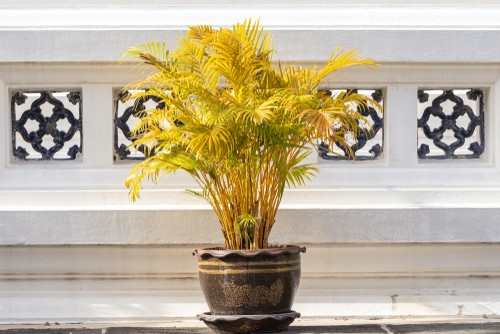
Areca palm leaves turning yellow is a common problem that many plant owners face. There are several reasons why this could happen, and it is important to identify the root cause to fix the issue. Here are some of the most common causes for yellowing leaves in Areca palms:
1. Overwatering and Underwatering
Overwatering and underwatering are two of the most common problems that cause yellowing leaves in Areca palms. When the soil is too wet or too dry, the plant cannot absorb nutrients properly, which can lead to yellowing leaves. It is important to ensure that the soil is well-drained and that the plant is watered only when the top inch of soil is dry.
2. Soil Issues
Soil issues such as root rot, rot, and pH imbalance can also cause yellowing leaves in Areca palms. When the roots are damaged, the plant cannot absorb nutrients properly, which can lead to yellowing leaves. It is important to ensure that the soil is well-drained and that the pH level is between 6.0 and 7.0.
3. Environmental Factors
Environmental factors such as direct sunlight, low humidity, drafts, and waterlogged soil can also cause yellowing leaves in Areca palms. It is important to ensure that the plant is placed in a location with indirect sunlight and that the humidity level is between 50% and 60%.
4. Pest Infestation
Pest infestation such as mealybugs, spider mites, and planthoppers can also cause yellowing leaves in Areca palms. It is important to inspect the plant regularly for signs of pests and to treat the plant with appropriate insecticides.
5. Fertilizer Burn
Fertilizer burn can also cause yellowing leaves in Areca palms. When the plant is over-fertilized, the roots can become damaged, which can lead to yellowing leaves. It is important to follow the recommended fertilization schedule and to avoid over-fertilizing the plant.
Nutrient Deficiencies and Yellowing Leaves
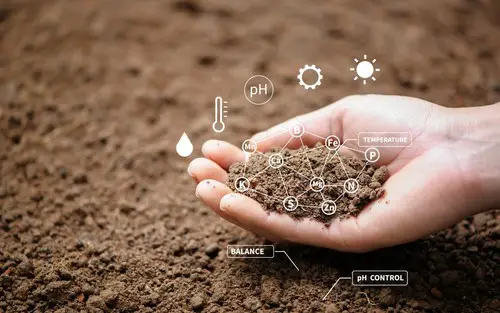
One of the most common reasons for yellowing leaves in Areca palms is nutrient deficiencies. The plant requires a balanced fertilizer that contains nitrogen, phosphorus, and potassium, as well as trace minerals such as iron, manganese, and magnesium to grow and thrive.
These nutrients are essential for the plant’s metabolic processes, and any deficiency can cause yellowing of the leaves.
Potassium deficiency is a common cause of yellowing leaves in Areca palms. Potassium is essential for the plant’s water balance and helps to regulate the opening and closing of stomata, the tiny pores on the leaves that allow for gas exchange. A lack of potassium can cause the leaves to turn yellow and brown, starting from the tips and edges.
Iron deficiency can also cause yellowing of the leaves, particularly the new growth. Iron is necessary for the production of chlorophyll, the pigment that gives leaves their green color. A lack of iron can cause the veins of the new leaves to turn yellow while the rest of the leaf remains green.
Overuse of fertilizers can also lead to nutrient deficiencies and yellowing of the leaves. Excess fertilizer can cause a buildup of salts in the soil, which can interfere with the plant’s ability to absorb nutrients. It is essential to use a balanced fertilizer and follow the manufacturer’s instructions for application rates.
Water Quality and Its Impact
The quality of water used to irrigate the Areca Palm can have a significant impact on the health of the plant.
Tap Water
Tap water is the most commonly used water source for household plants. However, it may contain chemicals such as chlorine and fluoride, which can be harmful to the plant. Chlorine and fluoride can cause the tips of the leaves to turn brown and the edges to become crispy.
Additionally, tap water may have a high pH level, which can lead to the yellowing of leaves. If tap water is the only option, it is recommended to let it sit for 24 hours to allow the chemicals to dissipate before using it on the plant.
Distilled Water
Distilled water is a good option for watering Areca Palms. It is free of chemicals and minerals that can harm the plant. However, distilled water lacks the essential minerals that are necessary for the plant’s growth. It is recommended to use a fertilizer to supplement the plant’s nutrient requirements.
Rainwater
Rainwater is an excellent option for watering Areca Palms. It is free of chemicals and contains essential minerals that are necessary for the plant’s growth. However, it is important to collect rainwater from a clean source to avoid contamination.
Rainwater can also be slightly acidic, which can lower the pH level of the soil. It is recommended to test the pH level of the soil and adjust it accordingly.
Soil and Drainage Conditions
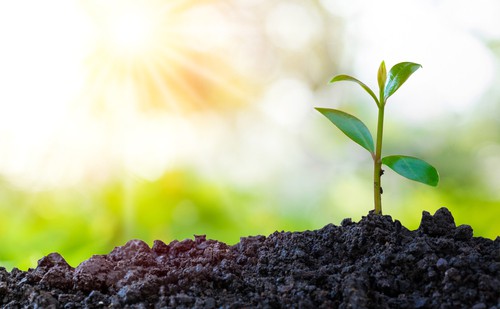
Areca palm leaves turning yellow could be due to soil and drainage conditions. The plant requires well-draining soil to thrive. If the soil is too compacted or poorly drained, it can lead to root rot, which can cause the leaves to turn yellow and eventually die.
To ensure proper drainage, it is essential to use a potting soil that is specifically designed for indoor plants. The soil should be well-draining and should contain perlite or compost to improve drainage. It is also important to ensure that the pot has drainage holes to prevent water from accumulating at the bottom of the pot.
If the soil is too dense and does not allow for proper drainage, it may be necessary to repot the plant in fresh soil. When repotting, it is important to gently loosen the roots and remove any damaged or dead roots. This will help the plant to establish itself in the new soil and promote healthy growth.
In addition to proper drainage, it is also important to ensure that the plant is not overwatered. Overwatering can lead to waterlogged soil, which can cause the roots to rot and the leaves to turn yellow. To avoid overwatering, it is recommended to allow the soil to dry out slightly between waterings.
Reviving Yellow Areca Palm
If you notice that your Areca palm leaves are turning yellow, it may indicate that the plant is stressed or not receiving the right care. However, you can revive a yellow Areca palm by taking some simple steps.
1. Check for Watering Issues
One of the most common reasons for yellow Areca palm leaves is over or underwatering. If the soil is too dry, the plant will not receive enough water, which can cause the leaves to turn yellow.
On the other hand, if the soil is too wet, it can lead to root rot, which can also result in yellow leaves. Therefore, it is essential to ensure that the plant is receiving the right amount of water.
2. Ensure Proper Sunlight
Areca palms require bright, indirect sunlight to grow well. If the plant is not receiving enough light, the leaves may turn yellow. Conversely, if the plant is exposed to direct sunlight for prolonged periods, it can lead to sunburn, which can also cause the leaves to turn yellow. Therefore, it is essential to ensure that the plant is receiving the right amount of sunlight.
3. Transplanting
If the Areca palm is not receiving the right nutrients from the soil, it can cause the leaves to turn yellow. In this case, transplanting the plant to a new pot with fresh soil can help revive the plant. When transplanting, ensure that the new pot has enough drainage holes to prevent waterlogging.
4. Photosynthesis
Photosynthesis is a process by which plants convert light energy into chemical energy, which they use to grow. If the Areca palm is not receiving enough light, it can affect photosynthesis, which can cause the leaves to turn yellow. Therefore, it is essential to ensure that the plant is receiving enough light to carry out photosynthesis.
By following these simple steps, you can revive your yellow Areca palm and restore it to its vibrant green color. Remember to check for watering issues, ensure proper sunlight, transplant if necessary, and promote photosynthesis.
Preventing Yellow Leaves
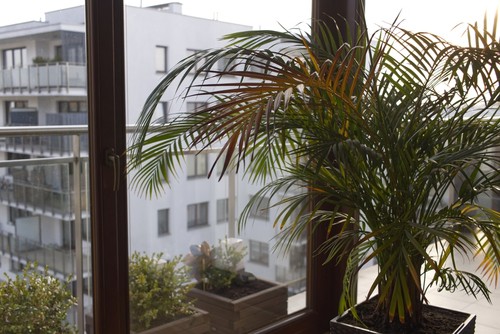
Areca palm leaves turning yellow can be a sign of several issues, including overwatering, underwatering, pests, or inadequate light. However, there are steps that can be taken to prevent yellowing leaves and keep the plant healthy.
Protect the Plant
Areca palms are vulnerable to pests, including spider mites and mealybugs. These pests can cause yellowing leaves and other damage to the plant. To prevent pests, the plant should be kept clean and free of debris.
Regularly wiping the leaves with a damp cloth can remove dust and debris that can attract pests. Additionally, using a pesticide can help prevent and control pests.
Watering Schedule
Overwatering and underwatering can both cause yellowing leaves in Areca palms. To prevent overwatering, the plant should be watered only when the soil is dry to the touch. The plant should not be allowed to sit in standing water, as this can cause root rot and other issues.
On the other hand, underwatering can cause the leaves to turn yellow and dry out. The plant should be watered regularly, but not too frequently.
Foliage
Areca palms need bright, indirect light to thrive. If the plant is not getting enough light, the leaves may turn yellow and begin to drop. Placing the plant near a bright window or providing artificial light can help prevent yellowing leaves. Additionally, the plant should be kept away from drafts and cold temperatures, as this can damage the foliage.
Frequently Asked Questions
How do you treat yellow leaves on palm trees?
Treatment for yellow leaves on palm trees depends on the cause of the problem. If the issue is due to overwatering, allow the soil to dry out before watering again.
If the problem is due to underwatering, give the plant a thorough watering. If the leaves are turning yellow due to a nutrient deficiency, fertilize the plant according to the instructions on the fertilizer package.
Why is my palm tree turning yellow?
Palm trees may turn yellow due to a variety of reasons, including overwatering, underwatering, nutrient deficiencies, pests, or diseases. It is important to identify the underlying cause of the problem to properly treat the issue.
What causes palm leaves to turn yellow?
Palm leaves may turn yellow due to a lack of nutrients, overwatering, underwatering, pest infestations, or diseases. Identifying the cause of the issue is essential in determining the proper treatment.
How often should I water my palm tree?
The frequency of watering for a palm tree depends on the species, size of the plant, and environmental conditions. Generally, palm trees prefer well-draining soil and should be watered when the top inch of soil feels dry to the touch.
Should I remove yellow leaves from my palm tree?
Yes, it is recommended to remove yellow leaves from palm trees. Yellow leaves may indicate a problem with the plant, and removing them can help prevent the issue from spreading to other parts of the plant.
Will yellow palm leaves turn green again?
If the underlying cause of the yellowing leaves is addressed and treated, the leaves may turn green again. However, if the leaves are severely damaged or dead, they will not turn green again.

Hey, I’m Lisa and I’ve been an avid gardener for over 30 years. I love writing, talking and living in the garden! Feel free to connect with me on my socials below


